parasite; feeds on hemolymph of adult and developing honey bees; serious pest of the European honey bee worldwide
Varroa Oudemans, 1904
Superorder Parasitiformes » Order Mesostigmata » Suborder Monogynaspida » Hyporder Dermanyssiae » Family Laelapidae » Genus Varroa
Varroa jacobsoni Oudemans, 1904
Varroa
Female: Gnathosomagnathosoma:
Division of body anterior to the propodosoma bearing two pairs of appendages (palps and chelicerae).
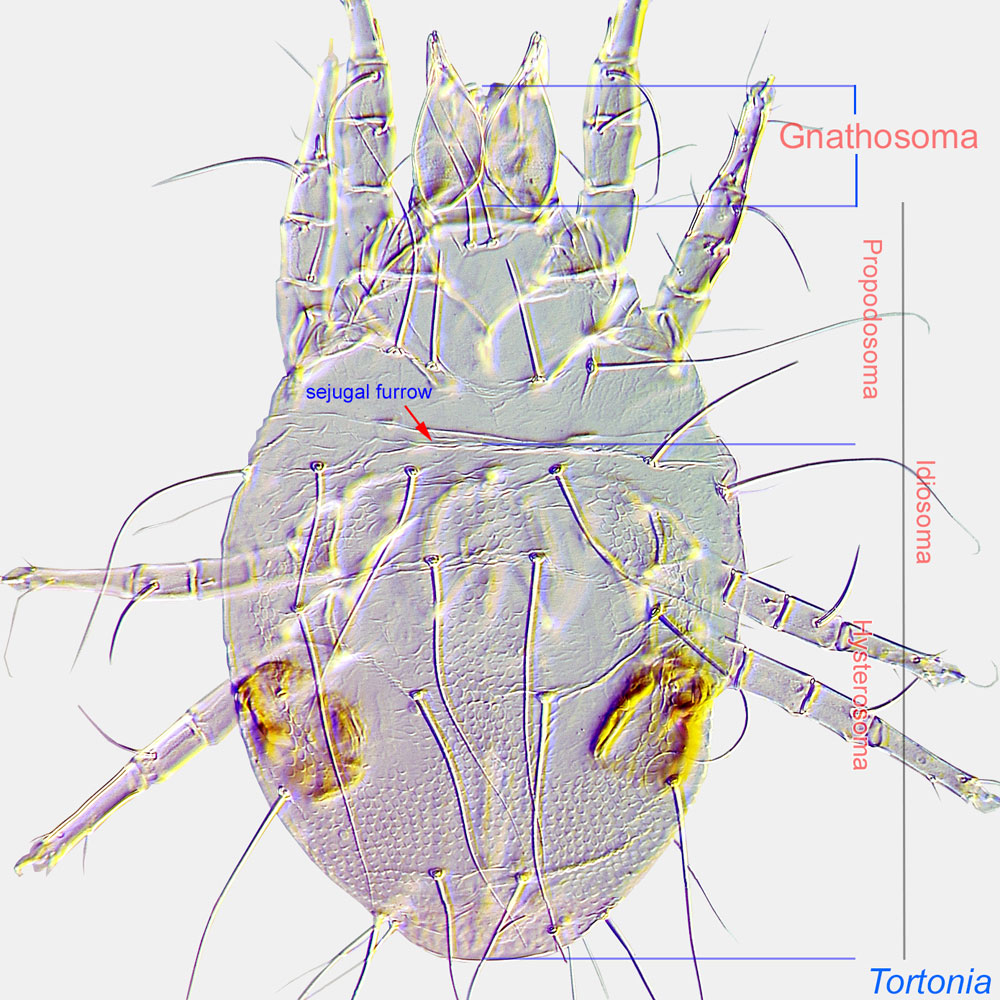 with 3 pairs hypostomal setae (Fig. 3). Idiosomaidiosoma:
with 3 pairs hypostomal setae (Fig. 3). Idiosomaidiosoma:
Body not including the gnathosoma.
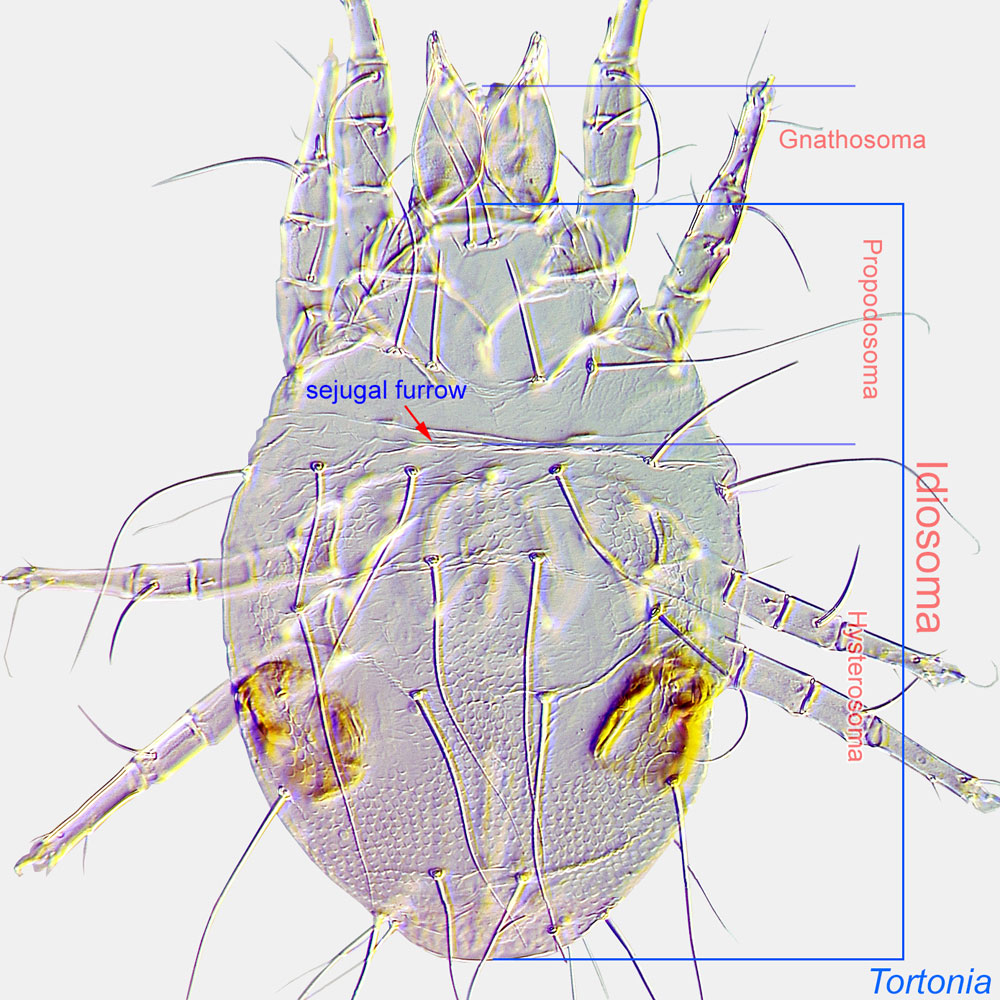 transversely oval in outline (Figs. 1, 2). Opisthosomaopisthosoma:
transversely oval in outline (Figs. 1, 2). Opisthosomaopisthosoma:
Body division posterior to legs IV; usually there is no distinct boundary delimiting this part of idiosoma.
hypertrichous (Figs. 1, 2, 5). Exopodal IV, epigynal, and matapodal shields enlarged, covering almost all of ventral opisthosomaopisthosoma:
Body division posterior to legs IV; usually there is no distinct boundary delimiting this part of idiosoma.
(Fig. 2). Epigynal and metapodal shieldsmetapodal shield:
In Mesostigmata, a pair (sometimes fused) of small sclerites posterior to coxae IV in the ventral region.
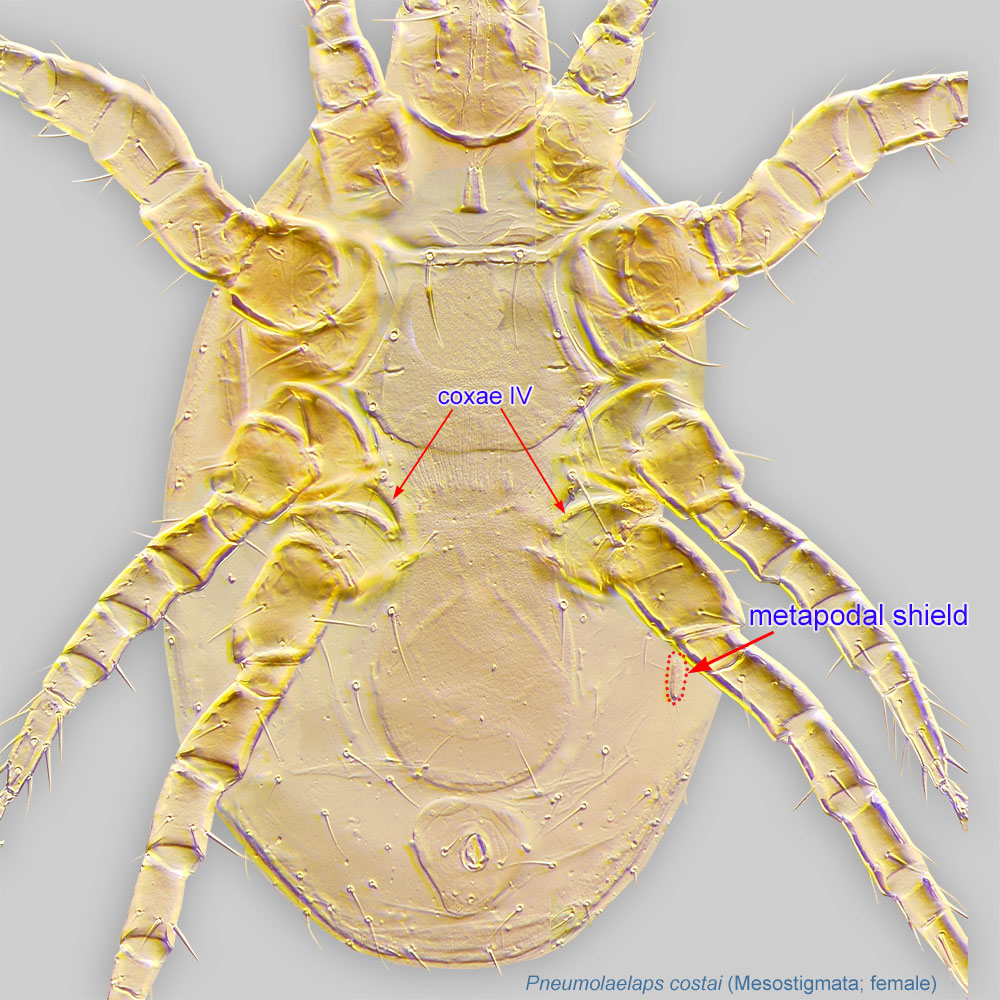 almost touching (Fig. 2). Anal opening ventral (Fig. 2).
almost touching (Fig. 2). Anal opening ventral (Fig. 2).
The following species are currently included in Varroa: Varroa destructor Anderson and Trueman, 2000Anderson and Trueman, 2000:
Anderson, D. L. amp; J. W. H. Trueman. 2000. Varroa jacobsoni (Acari: Varroidae) is more than one species. Experimental and Applied Acarology.24: 165-189-189.; Varroa jacobosoni Oudemans, 1904; Varroa rindereri de Guzman and Delfinado-Baker, 1996; and Varroa underwoodi Delfinado-Baker and Aggarwal, 1987. Molecular and morphological treatment of these species is available in Anderson and Trueman, 2000Anderson and Trueman, 2000:
Anderson, D. L. amp; J. W. H. Trueman. 2000. Varroa jacobsoni (Acari: Varroidae) is more than one species. Experimental and Applied Acarology.24: 165-189-189..
Similar to Euvarroa but differs by (character states of Euvarroa are in parentheses): idiosomaidiosoma:
Body not including the gnathosoma.
 transversely oval (not transversely oval); exopodal IV, epigynal, and matapodal shields enlarged, cover almost entire ventral opisthosomaopisthosoma:
transversely oval (not transversely oval); exopodal IV, epigynal, and matapodal shields enlarged, cover almost entire ventral opisthosomaopisthosoma:
Body division posterior to legs IV; usually there is no distinct boundary delimiting this part of idiosoma.
(exopodal IV and epigynal shieldsepigynal shield:
A shield protecting the female genital opening. Well-developed in Mesostigmata. Also known as epigynial shield.
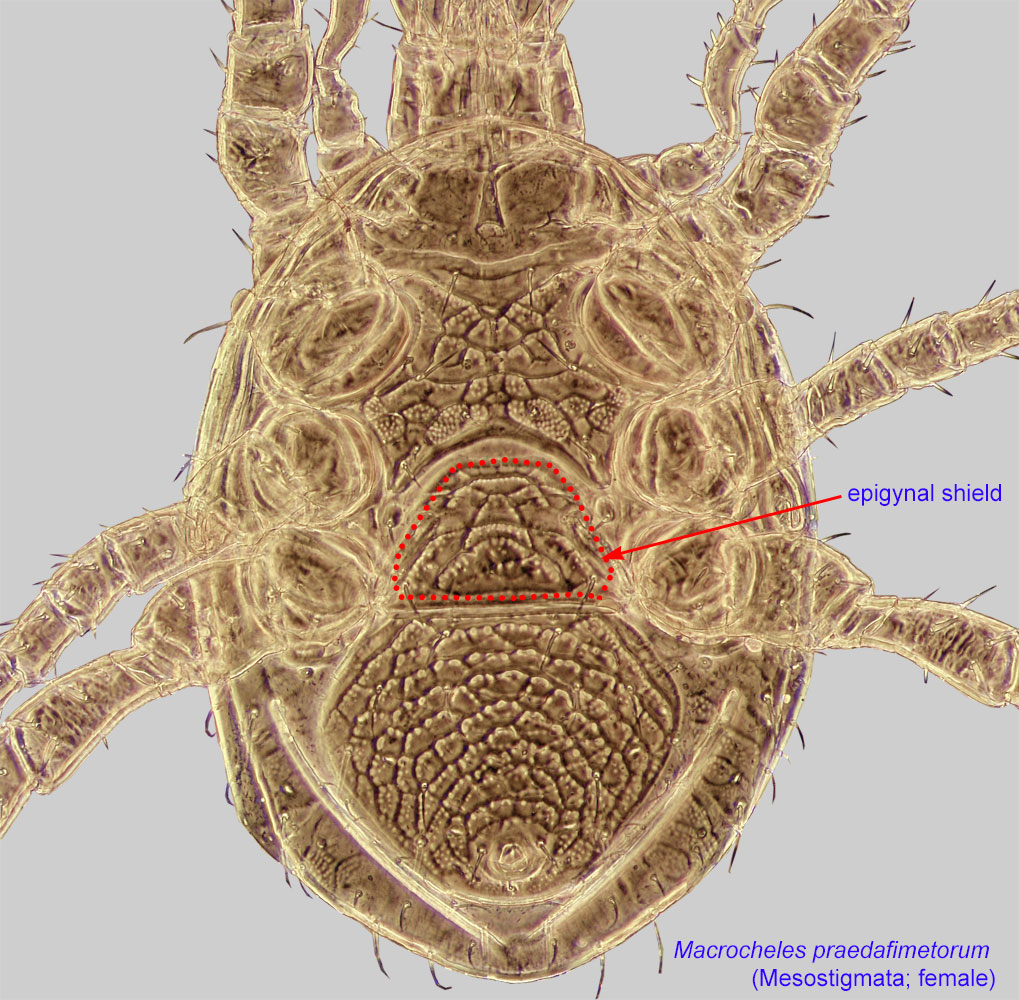 not enlarged, not covering); and anal shieldanal shield:
not enlarged, not covering); and anal shieldanal shield:
In Mesostigmata, a ventral shield bearing the anal opening and circumanal setae (adanal or postanal setae), but without any ventral setae or pores (lyrifissures) on it. If ventral setae are present on shield than referred to as a ventrianal shield.
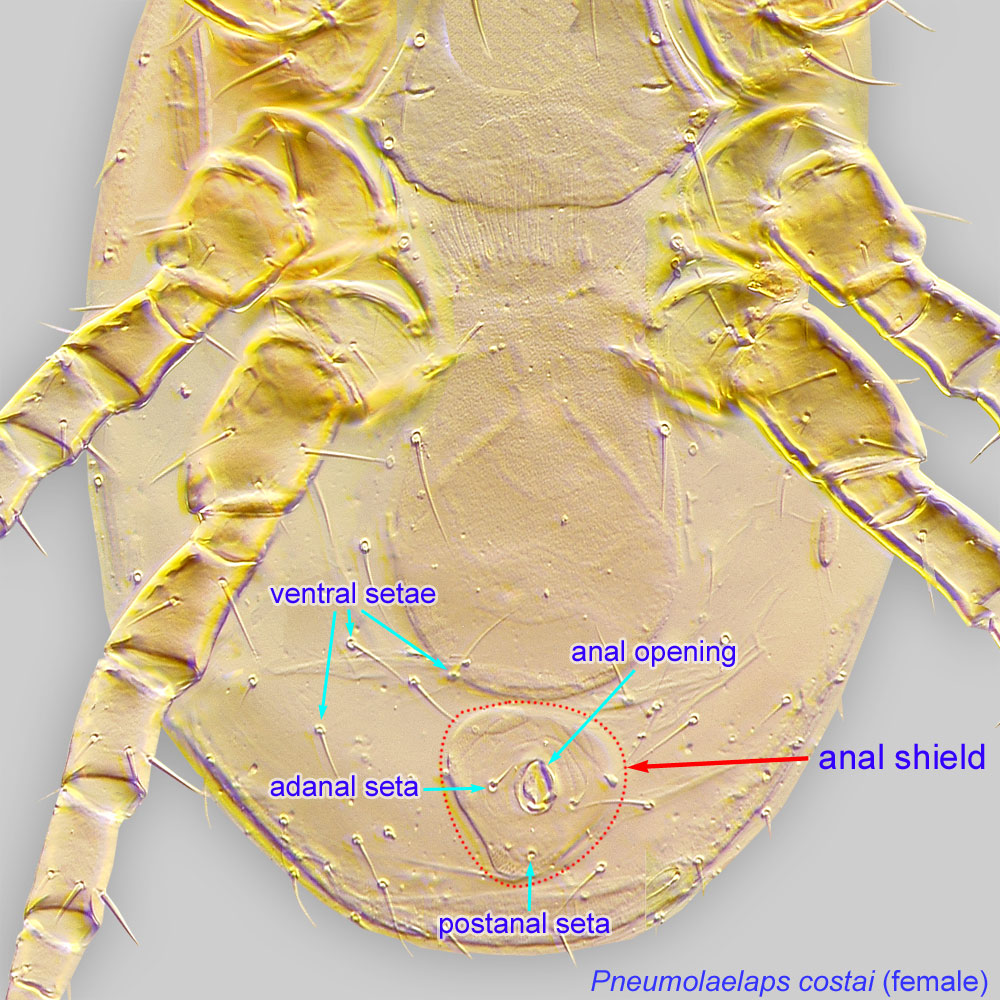 ventral, visible ventrally (anal shieldanal shield:
ventral, visible ventrally (anal shieldanal shield:
In Mesostigmata, a ventral shield bearing the anal opening and circumanal setae (adanal or postanal setae), but without any ventral setae or pores (lyrifissures) on it. If ventral setae are present on shield than referred to as a ventrianal shield.
 terminal, not visible ventrally).
terminal, not visible ventrally).
Varroa destructor is a globally distributed parasite attacking managed colonies of the European honey bee worldwide (it has not yet been found in Australia).
Other species of Varroa are distributed in Asia (southern countries) and New Guinea. The most northern record is from South Eastern Russia (Varroa underwoodi).
honey bees (Apis)
permanentpermanent:
associated exclusively with bees or their close relative, wasps; cannot live without these hosts
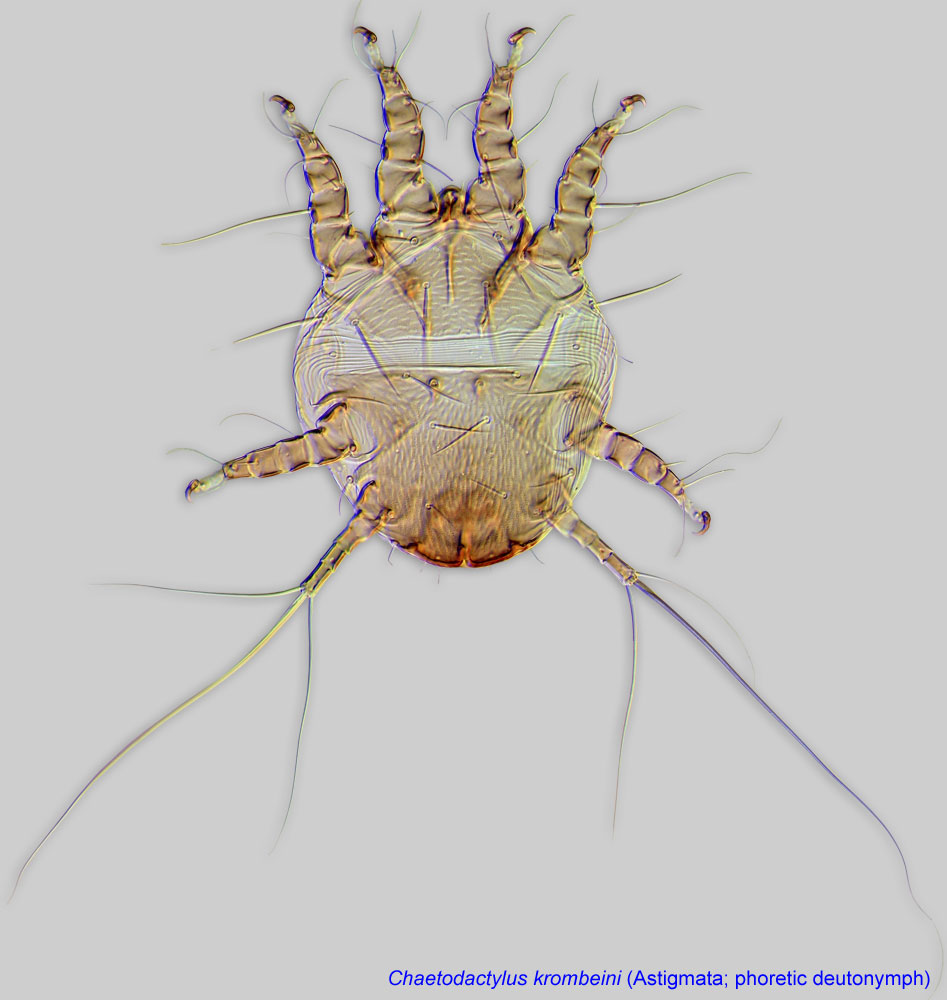 , and adults. Larvae are non-feeding, pharate, and develop under egg shell.
, and adults. Larvae are non-feeding, pharate, and develop under egg shell.This biological account was modified from Sammataro et al., 2000Sammataro et al., 2000:
Sammataro, D., U. Gerson amp; G. Needham. 2000. Parasitic mites of honey bees: life history, implications, and impact. Annual Review of Entomology. 45: 519-548..
Several key morphological features help make Varroa a successful ectoparasite: It can survive off the host for 18 to 70 hours, depending on the substrate; the female’s cheliceraechelicera:
Anterior, paired appendage of the body. Primary organ for food acquisition, adapted for chewing, piercing, tearing, sucking, or filtering.
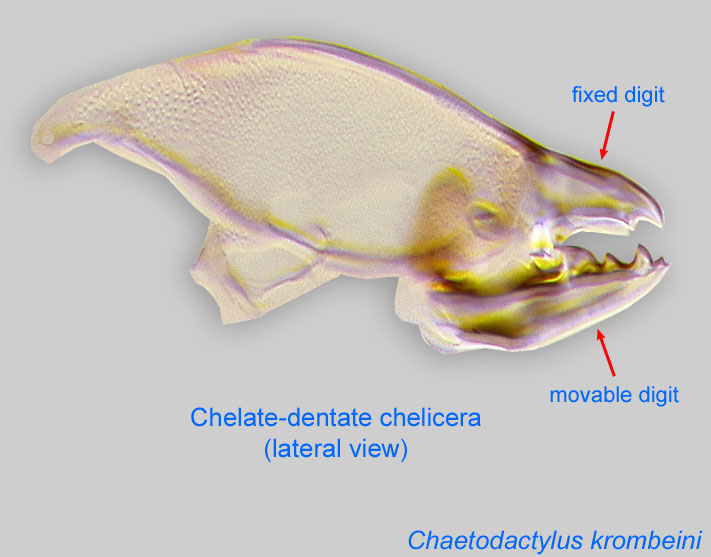 are structurally modified — the fixed digit is lacking and the moveable digit is a saw-like blade capable of piercing and tearing the host’s integument; the mite’s body is dorsoventrally compressed, allowing the mite to fit beneath the bee’s abdominal scleritessclerite:
are structurally modified — the fixed digit is lacking and the moveable digit is a saw-like blade capable of piercing and tearing the host’s integument; the mite’s body is dorsoventrally compressed, allowing the mite to fit beneath the bee’s abdominal scleritessclerite:
A component section of an exoskeleton; a plate forming the skeleton of an arthropod.
, thus lessening water loss from transpiration; and hiding there reduces Varroa’s vulnerability to grooming and to dislodgment during host activity.
Varroa females are often found on adult bees, which provide for dispersal and serve as short-term hosts. Varroa prefers young bees to older workers, probably because of the lower titer of the Nasonov gland pheromone geraniol, which strongly repels the mite. The mite pierces the soft intersegmental tissues of the bee’s abdomen or behind the bee’s head, and feeds on the hemolymph. When in an actively reproducing bee colony, the mite disembarks and seeks brood cells containing third-stage bee larvae. Varroa, which prefers drone larvae but also invades workers’ cells, is attracted to fatty acid esters, which are found in higher quantities on immature drones than on workers. Other known attractants are the aliphatic alcohols and aldehydes from bee cocoons and perhaps the larger volume of drone cells.
Most species in this genus are relatively benign parasites associated with honey bees in the wild. However, one species, Varroa destructor, has spread from Apis cerana to Apis mellifera, causing enormous bee losses. Varroa destructor can kill entire colonies of its unnatural host, the European honey bee Apis mellifera, while it does not kill colonies of its natural host, Eastern honey bee Apis cerana. This difference may be due to the presence of resistance against the mite developed by Apis cerana over evolutionary time.